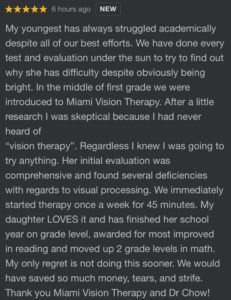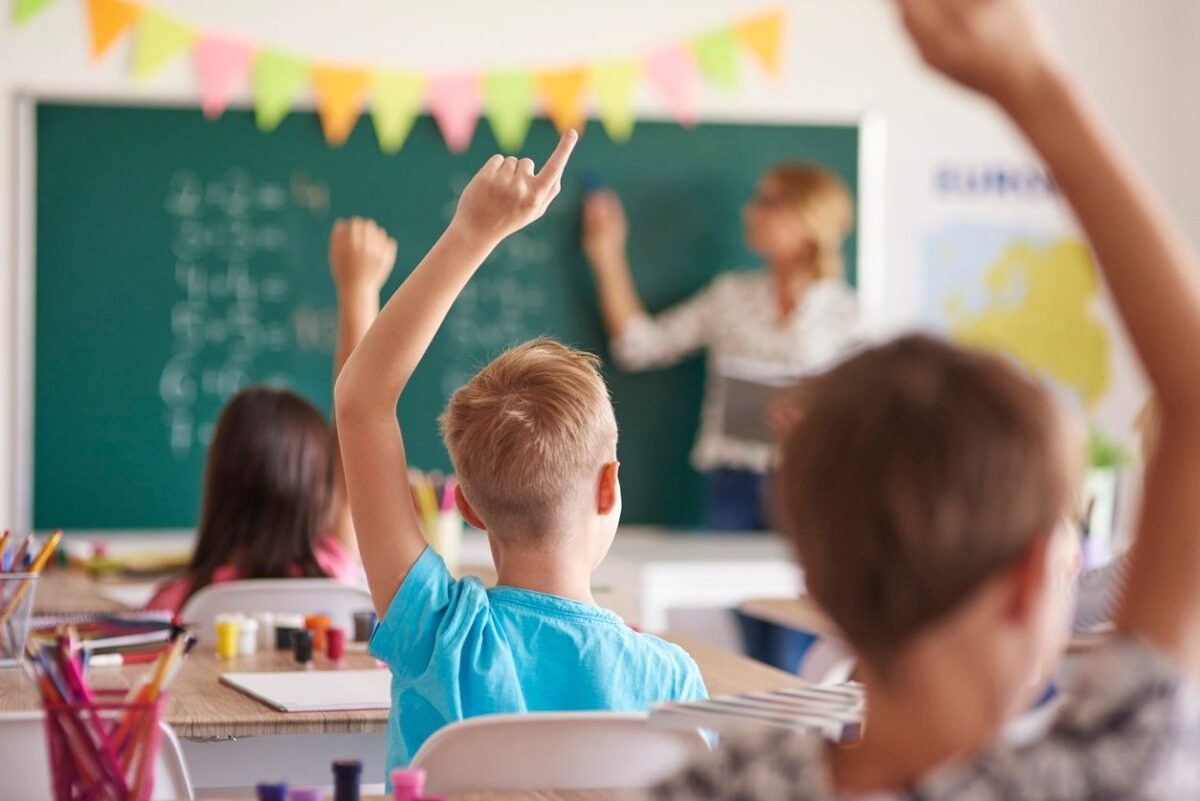As you’re getting ready to make the annual ‘back to school’ checklist, don’t forget to put assessing your child’s eyes near the top. I promise it’ll be easier than finding the 37 glue sticks or the exact composition book the teacher requested.
Seriously though, do you know that even if a child has 20/20 vision they can still have a binocular vision disorder which affects learning? If your child passed their vision screening but you know they’re not living up to their learning potential, it could still be their eyes holding them back.
Technology in the classroom has taken quite a toll on our visual system which is leading to even more vision-related issues. Research has shown an increase in a condition called “convergence insufficiency,” which is a diagnosis when your eyes are unable to work together. This visual inefficiency creates strain and discomfort with vision at best, and double or blurred vision if the severity increases. Words can also appear to move around the page when reading, making it hard for learning. In fact, this condition may mimic a learning problem rather than an eye problem. Research has also proven that this condition is effectively treated with vision therapy.
What is vision therapy? Great question. It all starts with a functional eye exam, which goes beyond a traditional eye exam to help uncover binocular vision dysfunction.
A functional eye exam focuses more on visual efficiency skills rather than just reading the letters at the end of the room. These skills include the eye’s ability to focus, coordinate, and track accurately for far and near. Difficulties with these skills is what we call a binocular vision disorder.
There’s a checklist of common symptoms of a binocular vision disorder in children:
Eye drifts out or in
Double vision
Easily tired
Poor coordination and balance
Clumsy
Unaware of things around them
Having a head/face tilt
Gets motion sick
Cannot sit still
Excessively touches stuff
Does not like reading
Falls asleep when reading
Poor handwriting
Better attention when spoken to than when reading
Poor grades in school, below intelligence levels
Squints or closes one eye when reading
Rubs eyes
Cannot catch a ball
Once we identify the cause of a binocular vision disorder, we can address these deficits through vision therapy. A vision therapy program involves a series of supervised in-office activities and at-home reinforcement exercises that trains your brain how to use your eyes more efficiently, so that your eyes can coordinate, focus, and work together easier and with less effort.
After all, if your brain is working overtime just to see clearly, there’s less brain power available to process what you’re seeing.
If your child is showing any of these symptoms it warrants a comprehensive functional vision examination. It’s important to rule out a visual component before they can reach their potential in school and beyond.
Check out our most recent testimonial from a parent with a child enrolled in vision therapy!

Have more questions about vision therapy? Join the community of 32,000 members on Vision Therapy Parents Unite on Facebook or just give us a call and ask away. At Miami Vision Therapy we want you to “see your potential!”
Man Kin (Eric) Chow, O.D, F.A.A.O





